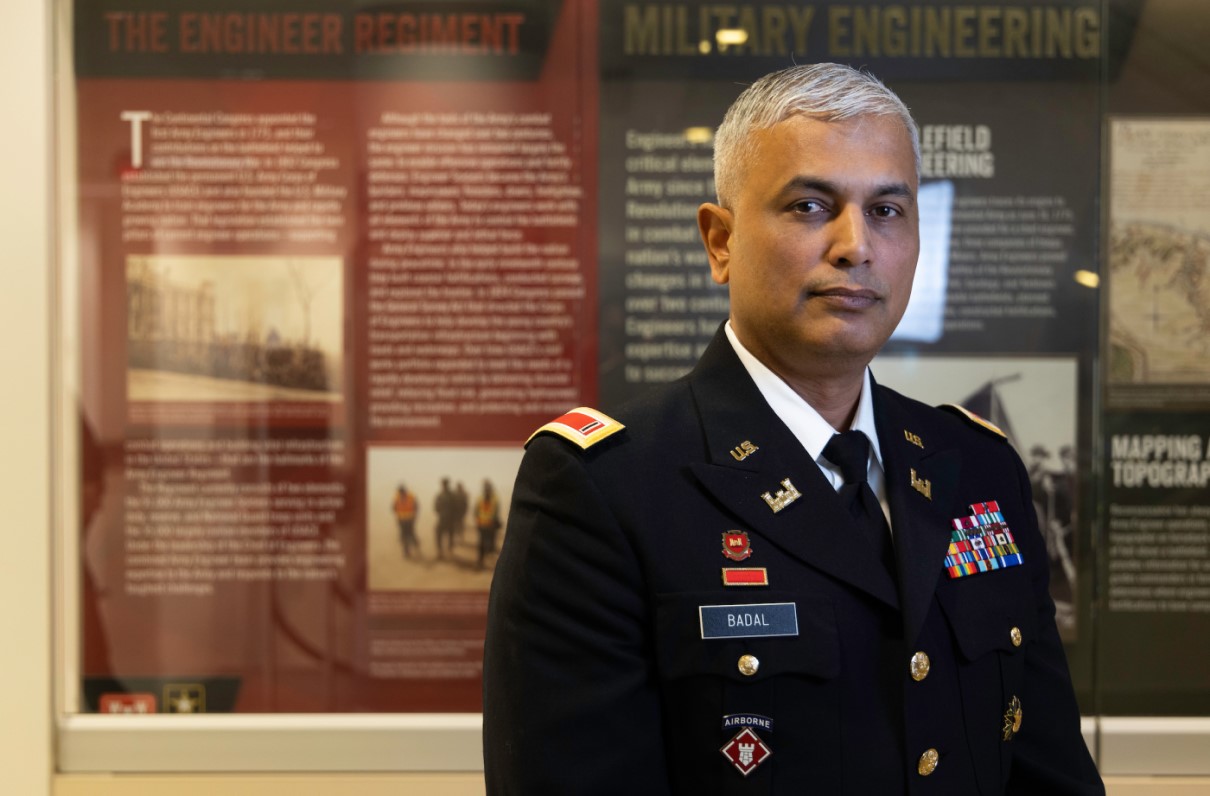The Army became Mohammed Badal’s home away from home shortly after he moved from Bangladesh to the U.S. in 1995 as part of the Diversity Visa Program.
Today, the chief warrant officer 5 and MOAA member is returning the favor to deployed American soldiers laying their heads down to sleep at night. As the chief of the Contingency Construction and Operational Energy Branch at the Army’s Office of the Chief of Engineers in the Pentagon, Badal and his group create design standards for structures built from locally sourced materials that can safely house U.S. soldiers and their allies stationed in harm’s way.
The Contingency Construction and Operational Energy Branch was created 10 years ago to safely and cost-effectively house U.S. soldiers during the conflicts in Iraq and Afghanistan, according to Badal’s boss, Col. Clete Goetz, director of the Office of the Chief of Engineers. This fall, under the Army Facilities Components System (AFCS) Program, the office is expected to roll out 25 new standards to U.S. European Command and 25 more the following year to U.S. Indo-Pacific Command, Badal said.
“What the Army realized is that to fight in a sustained combat operation, you need a strong infrastructure backbone,” Badal said. “You have to house the soldiers; you have to feed them and [provide] shelter from the environment. They realized that advanced planning is the key to success. As soon as you pass beyond the tents, that’s when you look at sustainment operations, and engineering and planning is really the key to success.”
Building was in Badal’s blood at a young age. As a child, he spent time leaning over his father’s shoulder at the drafting table. When he came to America at 19, he noticed how those working construction only worked during certain times of the year due to the weather.
After getting off work one day from an Italian restaurant in New York City, Badal went to an Army recruiting station in Times Square to ask about joining the service. The military was a place he thought he could develop his interest in carpentry and masonry while providing a service to the nation that recruited him.
[RELATED: More MOAA Members in the Spotlight]
Once enlisted, Badal spent the next two decades furthering his education and rising through the ranks. Badal earned a master’s degree in project management from Colorado Technical University in 2013 and became a chief warrant officer 5 earlier this year.
Not only has Badal’s superior technical expertise impressed his bosses over the years, but so has his ability to communicate that knowledge.
Badal deployed to Afghanistan in December 2006 as part of the 19th Engineer Battalion, stationed at Fort Knox, Ky., under the command of then-Capt. Jeff Hall. While deployed, Badal spent a few months overseeing the construction of living quarters for U.S. soldiers, which involved organizing and communicating with a group of Afghan laborers. In just three months, they were able to build three brick barracks, a dining facility, and maintenance facilities for an additional 300 U.S. soldiers.
“[Badal] was able to coach us on the cultural complexity [of the group] we were working with,” said Hall, now a colonel and in command of the 555th Engineer Brigade at Joint Base Lewis-McChord, Wash. “There were enough similarities [in their languages] that he was able to get the gist of what they were saying and vice-versa. … It was a massive undertaking, and we could not have done it without the local [Afghans] and could not have done without Mr. Badal.”
Goetz also praised Badal’s inquisitiveness and eagerness to take on new projects. Badal has been working on finding environmentally friendly solutions for water and fuel challenges for deployed soldiers, as well as improving energy efficiencies at overseas contingency sites. He has also teamed with the Army Construction Engineering Research Laboratory in its efforts to use 3-D printing to construct those sites. According to Badal, this technology has yet to be implemented in the field but holds promise.
“I love engineering, I love soldiers and making a difference in soldiers’ lives,” Badal said. “Anything we can do to enhance the quality of life for soldiers and their families, we should continue to do that.”
“The motivating force behind his passion is to make things better,” said Goetz of Badal. “We are really lucky to have him. He is special.”
PREMIUM Membership Comes With So Many Benefits. Are You Taking Full Advantage?
Find out just how many benefits are waiting for you, and start using them TODAY.

